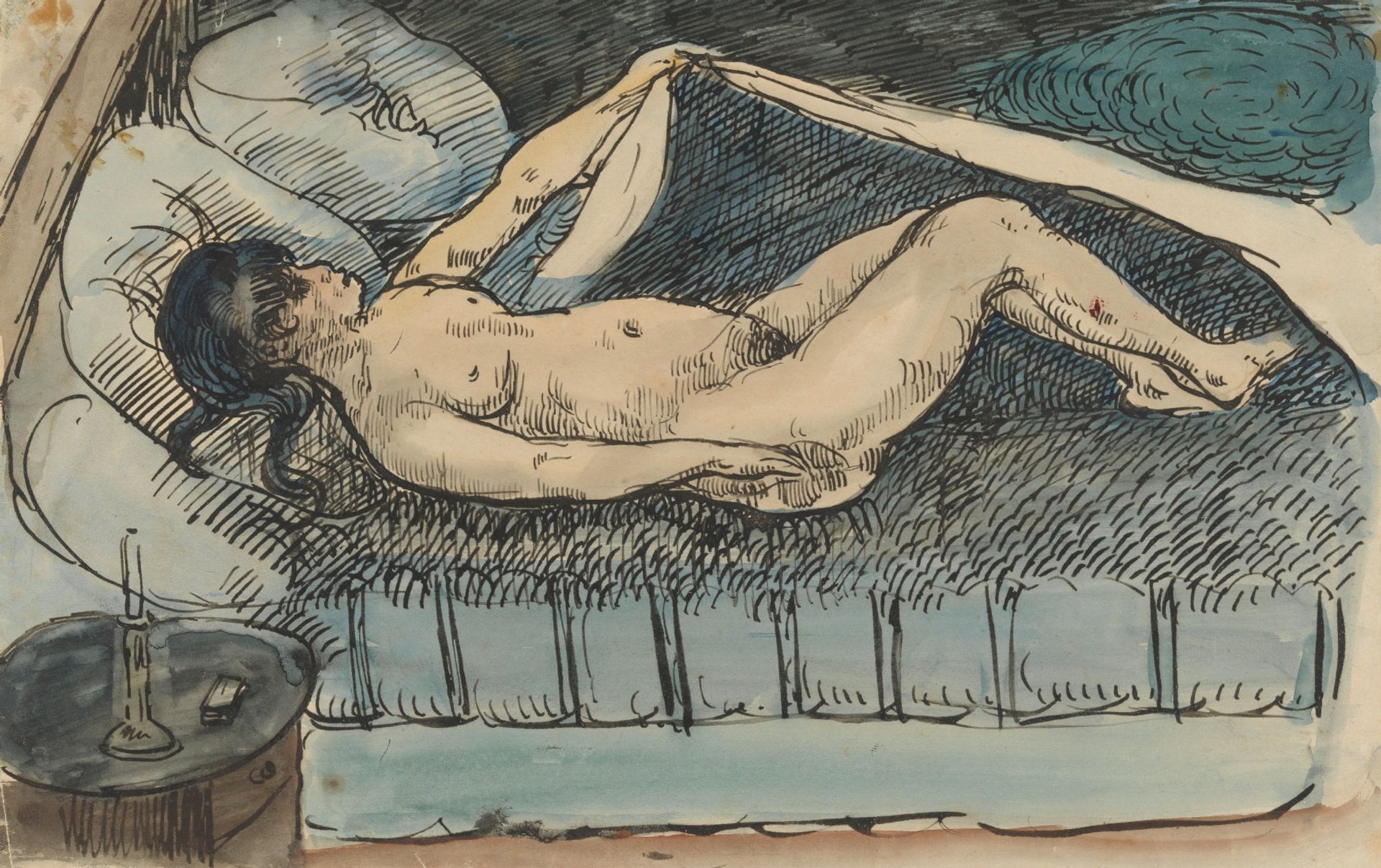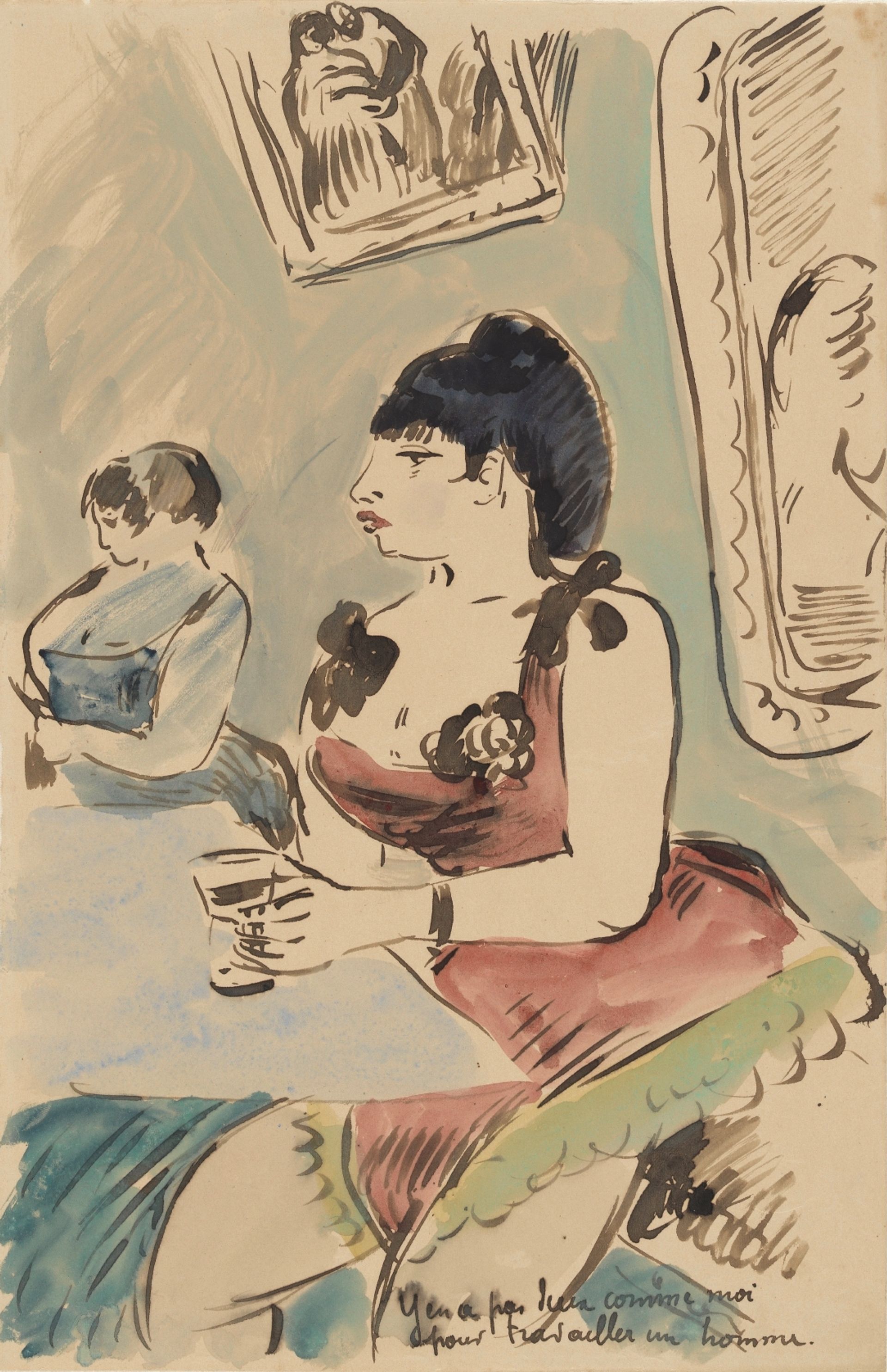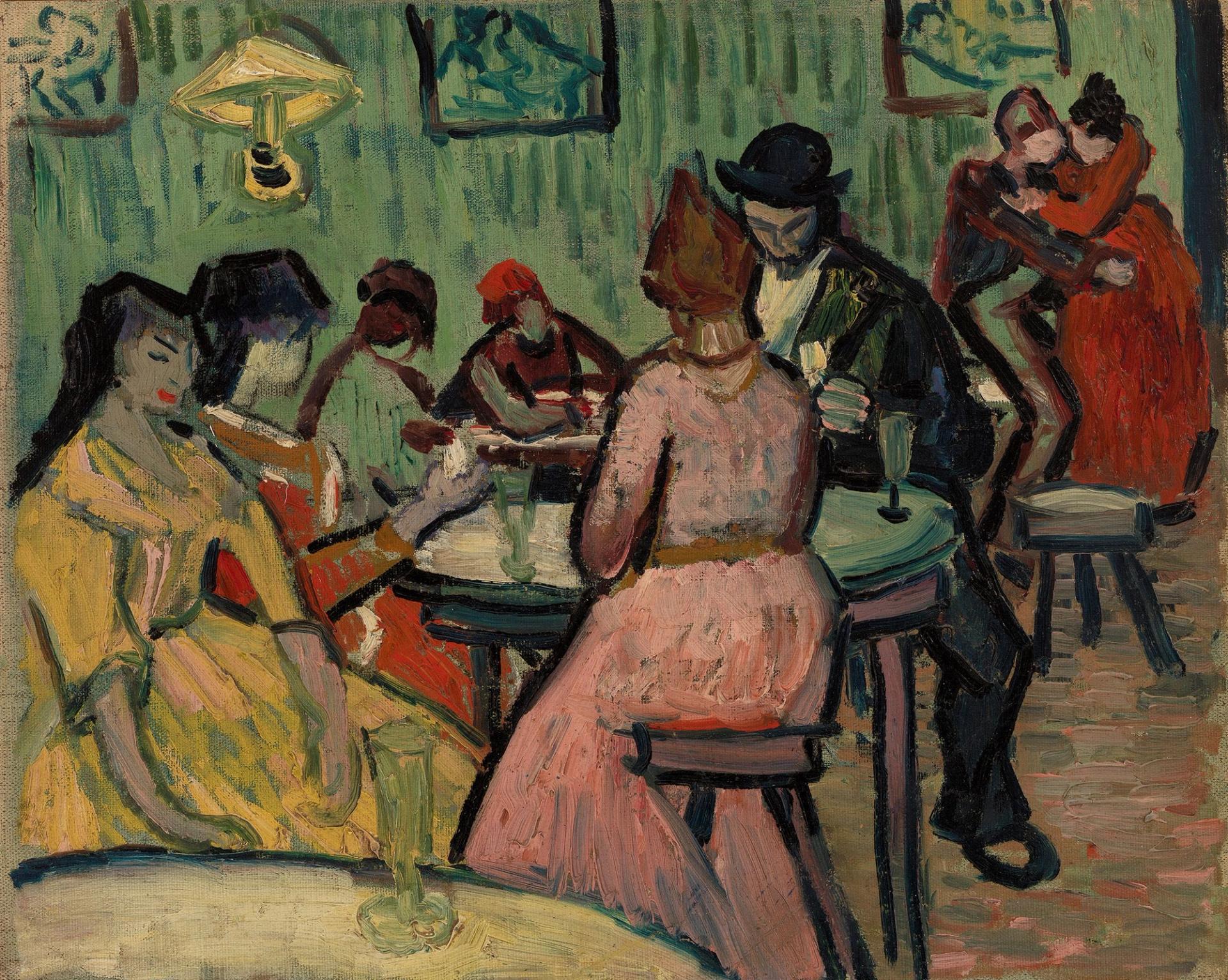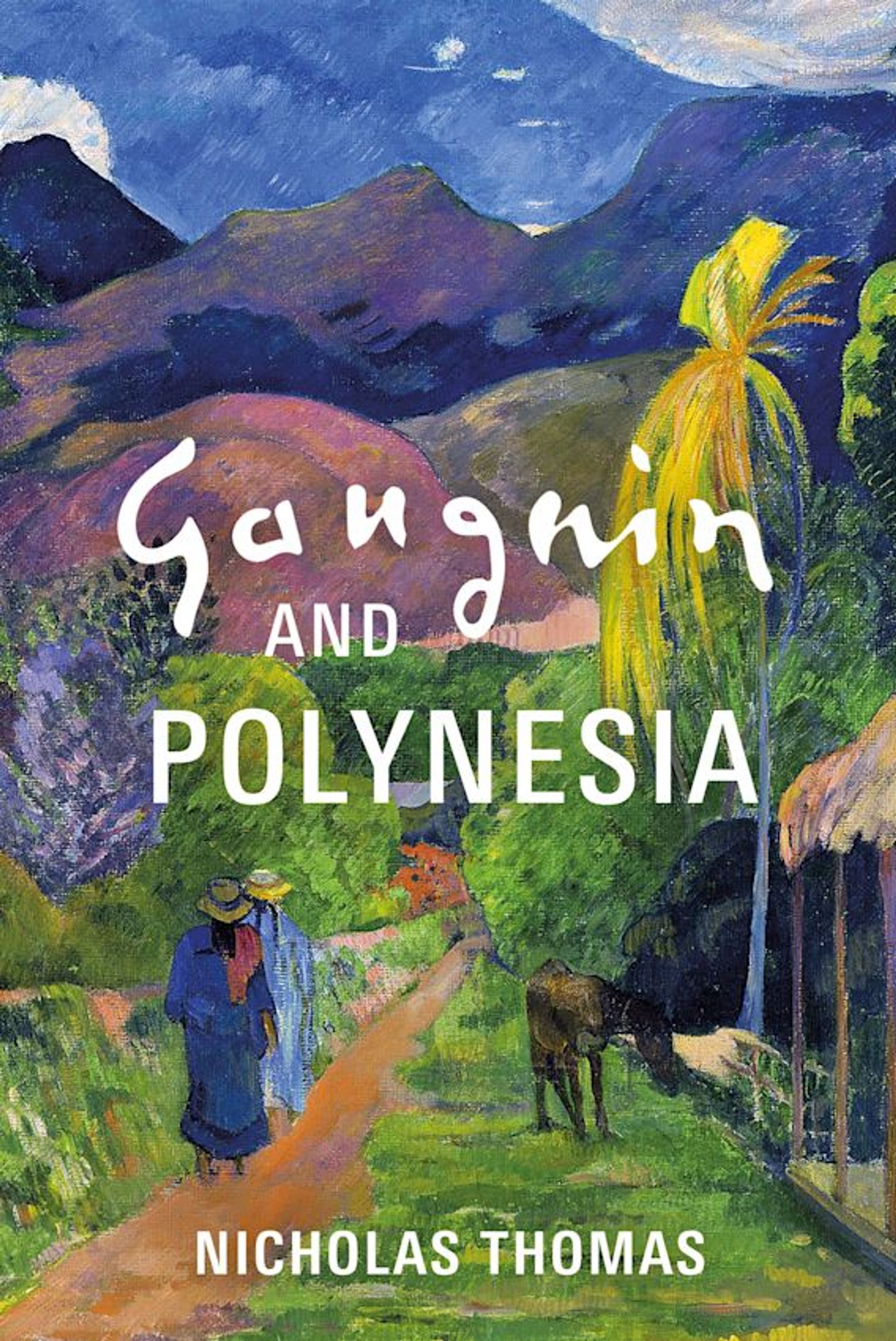Among the surprises in the Van Gogh Museum collection is a group of brothel sketches by Emile Bernard, a young colleague of the Dutch artist. These drawings and watercolours provide an unusual insight into what may now seem today a curious choice of subject matter.

Emile Bernard’s Brothel Scene and poem on the reverse (June 1888)
Van Gogh Museum, Amsterdam (Vincent van Gogh Fondation)
The two artists had become friends in Paris in 1886 and after Van Gogh left for Arles in February 1888 they corresponded regularly and exchanged artworks. Of the 27 drawings that Bernard posted to Van Gogh, 17 feature prostitution (and a further two are sexual allegories). Most have only occasionally been exhibited or reproduced.
These “brothel scenes” have now been properly catalogued, with the work undertaken by Van Gogh Museum researcher Joost van der Hoeven. His detailed publication, which goes online this week, explores these intriguing works.
What attracted the two artists to this sensitive subject matter? Van der Hoeven believes it was not lasciviousness, but rather because prostitution represented “a modern subject”. That is, both artists and women who sold sex could be seen as challenging society’s bourgeois norms and values.
Van der Hoeven points out that Van Gogh and Bernard “viewed marginalised women involved in prostitution as people avant-garde painters ought to support”. In this respect, he points to parallels with the way that Van Gogh had painted Brabant peasants three years earlier.
Among the first works which Bernard posted to Van Gogh in Arles was Brothel Scene, sent in June 1888. The stern madame looks on as a younger woman knocks back a glass and seduces a client in the salon. On the wall behind them hangs a painting of Eve: she reaches towards a branch to pluck the apple, just before the “fall”. Van Gogh responded that he found this watercolour “VERY VERY INTERESTING”, emphasising his words in capitals.
Bernard had inscribed the watercolour with an apparently casual comment in French, which translates as “To my friend Vincent, this silly sketch”. What is on the reverse comes as a surprise: a poem Bernard had written on the evils of prostitution, condemning it as a depraved system which victimises women.
It is difficult to reconcile the apparent contradiction between the image with its lighthearted inscription and the sober poem. Perhaps they represent confusion in the mind of the young Bernard, who had only just turned 20.

Emile Bernard’s Female Nude reclining on a Bed (July 1888)
Van Gogh Museum, Amsterdam (Vincent van Gogh Fondation)
Bernard’s second batch of ten drawings, sent a month later, included Female Nude reclining on a Bed. Although Bernard ordered his friend not to show these drawings to anyone, Vincent immediately forwarded them to his brother Theo in Paris: “He [Bernard] expressly forbids me to send them to you, but you’ll receive them by the same post.” Vincent again approved Bernard’s efforts, giving the works the accolade of being “very Rembrandtesque” and reminiscent of Francisco Goya.
Curiously, the next brothel works were drawn on a piece of folded stationary from Au Printemps, the upmarket Parisian department store (which still exists). Conservators recently discovered the shop’s watermark in the paper.
Bernard’s final drawings are a set of eleven sent in October. These included one work he captioned (in French) No one can pull a man’s strings as well as me, which seems to show the same model as in his earlier Brothel Scene.

Emile Bernard’s No one can pull a Man’s Strings as well as Me (October 1888)
Van Gogh Museum, Amsterdam (Vincent van Gogh Fondation)
Although Van Gogh expressed admiration for No one can pull a man’s strings as well as me and another drawing, he was critical of the remaining nine. He complained to Bernard that they were “too vague, too little flesh and bone”.
Presumably Bernard knew the brothels of Montmartre, but what about those that may have been frequented by Van Gogh in Arles? Van der Hoeven’s catalogue focuses on Bernard’s drawings and attitudes, but what do Van Gogh’s letters and artworks reveal?
The Yellow House was less than five minutes’ walk from the red-light district and he would have passed near it every time he walked into town. Van Gogh called the place “the street of the kind girls”.
In March 1888, three weeks after Van Gogh's arrival, there was a fight involving a small group of Italians and French soldiers in the district, which resulted in two murders. A few days later Vincent wrote to Theo that he “took advantage of the opportunity to go into one of the brothels”, apparently out of curiosity, reporting that so far this had represented “the limit of my amorous exploits vis-à-vis the Arlésiennes”. But by early October Van Gogh was complaining to Theo that “for at least three weeks I haven’t had enough [money] to go and have a screw for three francs”.
Van Gogh sent no brothel sketches to Bernard (instead he sent beautifully drawn copies of his best paintings). However, he did make two brothel paintings for himself. The first, done at the beginning of October 1888, does not survive: it is most likely either lost or was destroyed by the artist, who may have been dissatisfied with it.
Paul Gauguin arrived in Arles on 23 October, to stay in the Yellow House and collaborate artistically with the Dutch artist. A week later Van Gogh told Bernard: “We’ve made some excursions in the brothels, and it’s likely that we’ll eventually go there often to work.”

Van Gogh’s The Brothel (November 1888)
Barnes Collection, Philadelphia
Ten days later Van Gogh informed Theo that “I’ve done a rough sketch of a brothel”. This must be The Brothel (November 1888), which is now at the Barnes Foundation in Philadelphia.
Van Gogh depicted the salon. Three women in gaudily coloured dresses sit in the foreground. On the far side of the table a man in a dark hat has a glass of absinthe. Further back are two soldiers, sporting red military caps and dancing or drinking with their partners.
Following Bernard’s lead, Van Gogh sketchily depicts three paintings hanging on the rear wall. The one of the right is reminiscent of Titian’s Venus of Urbino (1534, now Uffizi Galleries, Florence). Van Gogh’s painting is hardly an overtly sexual scene and without the artist’s title it could be mistaken for a slightly raucous café late at night.
Artistically, The Brothel is hardly a success, primarily because Van Gogh liked to work in front of his motif, not from his imagination—as Bernard and Gauguin would do. Van Gogh could hardly take his easel and paints into a brothel and even surreptitious sketching would have been very awkward and risky. It was almost the most difficult subject he could tackle.
Gauguin’s stay in Arles would eventually come to a tragic end. Late in the evening of 23 December 1888, in the Yellow House, Van Gogh mutilated his ear and wrapped the lump of severed flesh in paper. He took the gruesome package to the brothel at 1 Rue de Bout d’Arles, delivering it to a woman there.
Five weeks later Van Gogh told Theo that he had gone back to the brothel “to see the girl I went to when I went out of my mind”. He admitted that she had “suffered from it and had fainted but had regained her composure”, but “people say good things of her”.
The following month Van Gogh complained that the locals were meddling in his life when he was “in the middle of painting, eating or sleeping or having a fuck in the brothel (not having a wife)”. This would remain the last mention of the subject in Van Gogh’s correspondence.
Other Van Gogh news:

Cover of Nicholas Thomas’ Gauguin and Polynesia, published by Head of Zeus/Bloomsbury, February
Many Van Gogh aficionados are also interested in Gauguin, and the latter is the subject of a major book published this month by Nicholas Thomas. Gauguin and Polynesia, as the title suggests, focuses on the artist’s life in Tahiti and the Marquesas Islands. What makes this publication particularly rewarding is that it is written by an anthropologist who did his early fieldwork in the Marquesas and is a specialist on Pacific culture (and is now director of Cambridge’s Museum of Archaeology and Anthropology). Thomas offers plenty of new perspectives on Gauguin’s later years.



